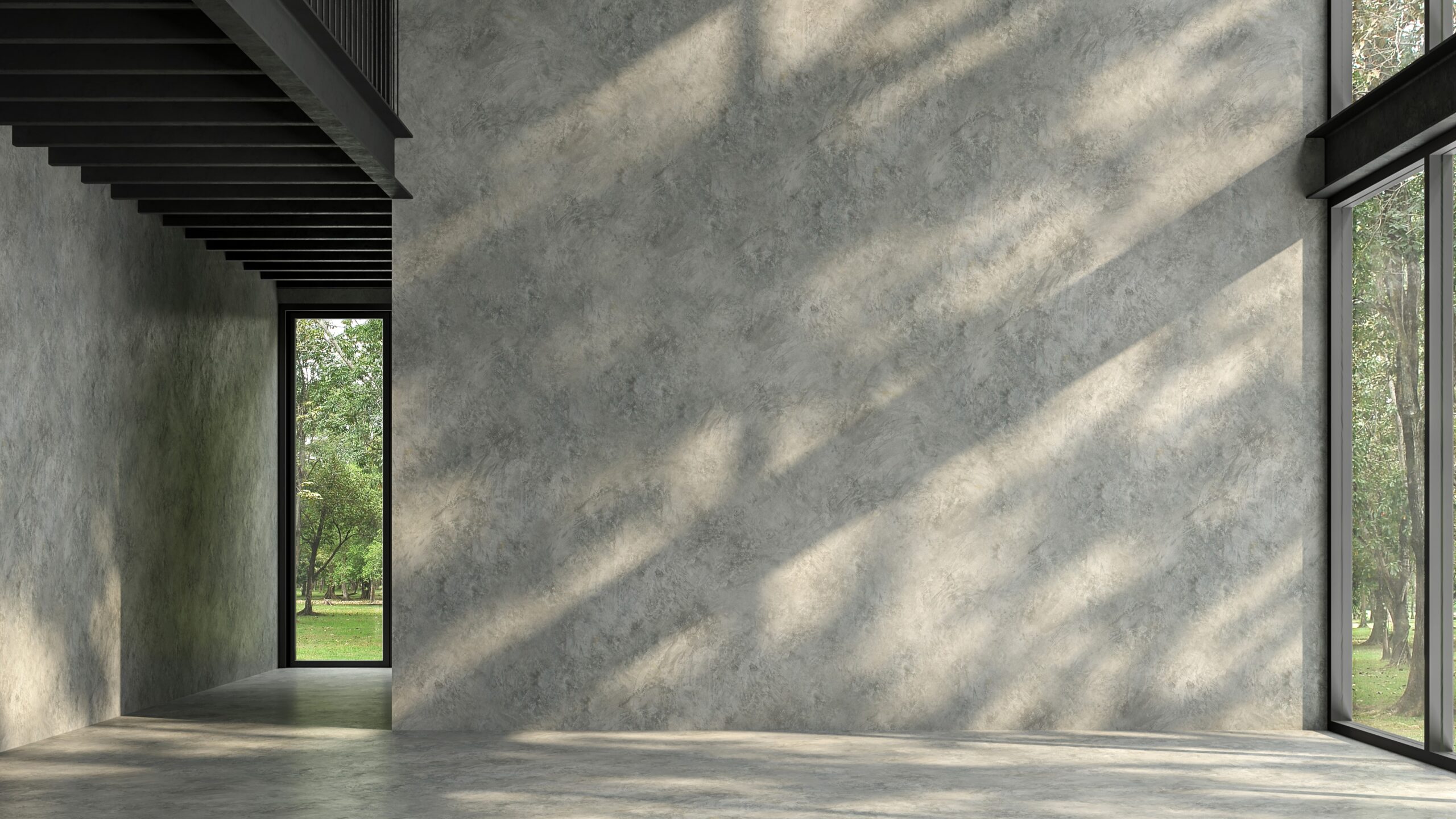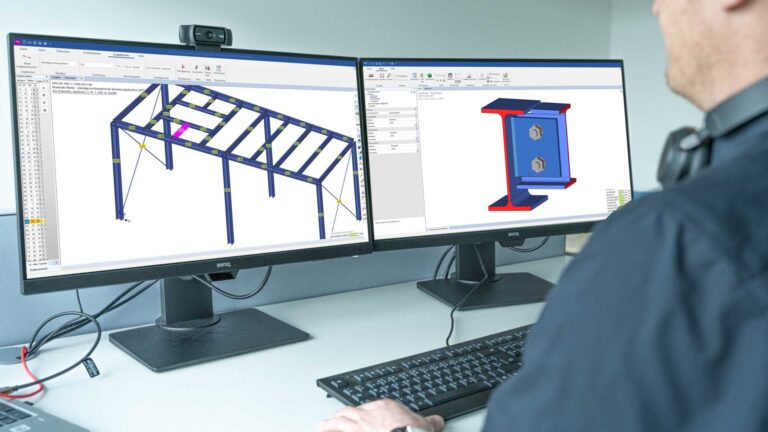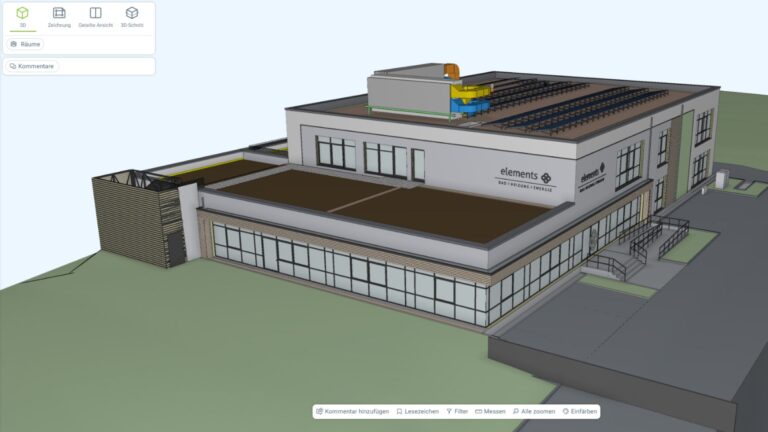Release 2023-2: FRILO presents a new program for the calculation of strut-and-tie models in reinforced concrete construction

FRILO Software GmbH has successfully delivered version 2023-2. With the update, the vendor of innovative solutions for structural analysis and design launches a new program that allows the calculation of strut-and-tie models for reinforced concrete structures. Moreover, three software solutions have been fitted with the PLUS user interface. The new interface between SCIA Engineer and FRILO extends the design and calculation options for timber truss nodes.
The FRILO version 2023-2 provides structural engineers with BSM+, a new program which, in its first version, enables the generation of stiffness-optimised strut-and-tie models for any reinforced concrete components. In the process, strut-and-tie systems are determined for rectangular structures with freely selectable re-entrant corners as well as recesses. In addition to classic concentrated loads, the user can also define linear and trapezoidal loads, which are then automatically converted into equivalent concentrated loads by the program. All member forces can be put out with the resulting horizontal and vertical load portions. “Common standard design methods cannot easily be applied to structural and geometric discontinuities such as offsets and recesses. Therefore, we have developed BSM+ for reinforced concrete. Because we provide a tool for generating simple strut-and-tie models in reinforced concrete construction, the structural engineer no longer has to rely solely on his/her experience in areas for which standard design is not applicable,” explains Peter Fritz, Head of Product Management and Customer Success at FRILO.
Further updates for the Continuous Beam program
After the DLT+ Continuous Beam had already been generally revised in Release 2023-1, further updates were applied to the most widely used FRILO program in the current software version. Thus, the possibility of biaxial design including reinforcement layout of reinforced concrete beams was added as an add-on option. The calculation is performed on the basis of reinforcement laying per corner for the ultimate limit state and the serviceability limit state. In addition, the new program version enables users to adjust the crack width user-specifically and select restraints at end supports on a percentage basis. In the case of non-linear creep of reinforced concrete beams, the resulting creep factor can also be increased automatically.
Three programs with the new PLUS user-interface
Three central FRILO software solutions, Steel Cross-Section Design SQN+, Reinforced Concrete Design B2+ and Timber Construction Details HO12+, were provided with the modern PLUS user interface. SQN+ (formerly ST7) performs verifications of cross-sections in the ultimate limit state. The verification method is based on Eurocode 3. With B2+ (successor to B2), cross-sections can be designed for bending with longitudinal force and for shear force. Moreover, the user can perform verifications of crack widths and stresses or determine the effective stiffness. The new PLUS program HO12+ (successor to HO12) is suitable for the calculation and design of notches (solid timber and glulam) and openings (glulam) in timber beams. The user must enter the internal forces and dimensions required for the verifications. Verifications of the resisting tensile force, the residual cross-section and the reinforcement can be performed.
Interface between SCIA and FRILO for timber design
Furthermore, a new interface between SCIA and FRILO was created in the timber range. Based on a 3D model in SCIA Engineer, users will be able to simply select individual truss nodes in the future and transfer them to the FRILO program Timber Joint HO13+. During the transfer, all information on materials, cross-sections, load combinations and their internal forces already known in the 3D model of SCIA are automatically taken into account. Thus, the user needs not enter these data again in the FRILO program. This saves time and reduces sources of error in the timber design. In HO13+, the user can perform easily and reliably the corresponding verifications for the structural safety of the truss nodes in 2D. “The new interface underscores our ambition to exploit synergies between SCIA’s and FRILO’s solutions. The workflow brings us one step closer to our goal of making the work of structural engineers more efficient and productive,” says Markus Gallenberger, CEO of both companies.




